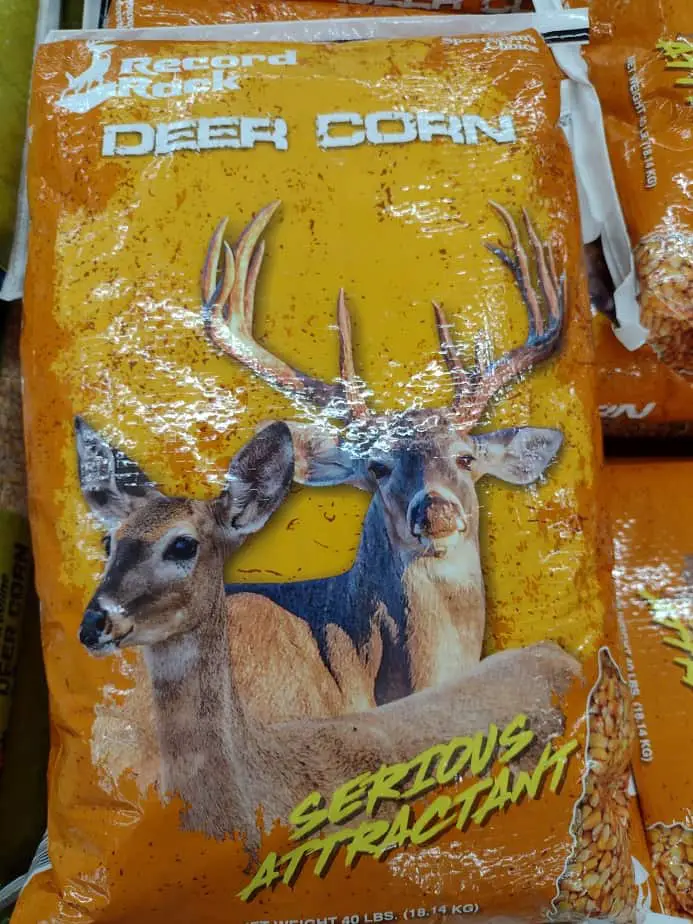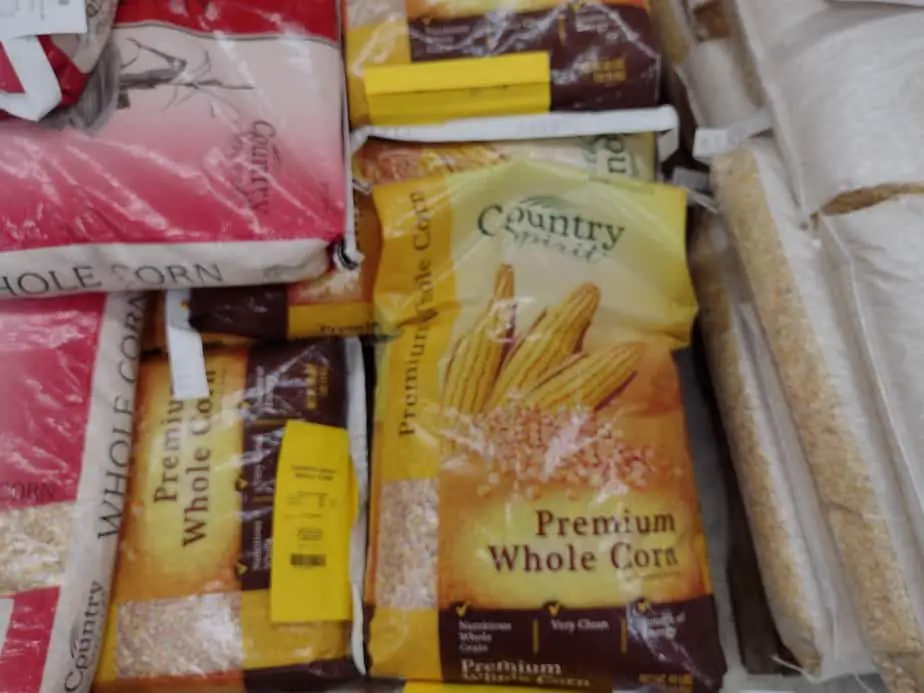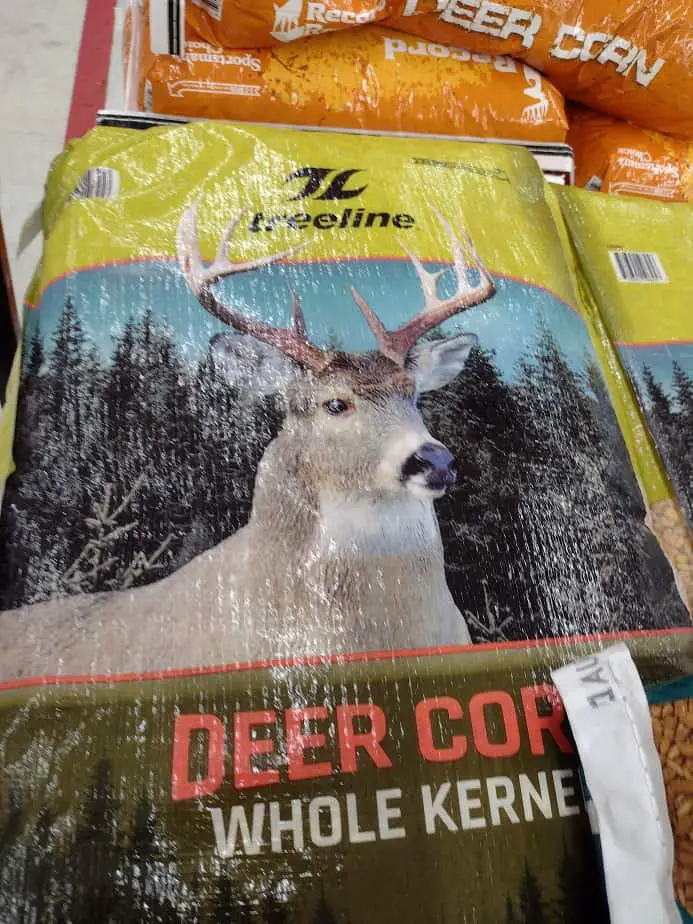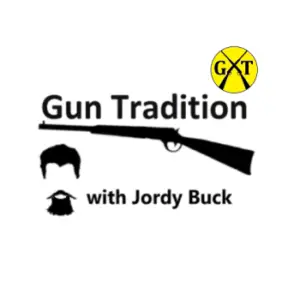I can’t walk in any store around here without seeing a bag of Deer Corn on display. Even gas stations all sell it around here. As a hunter, writer, and small-scale farmer, I can tell you everything about “Deer Corn”.
Deer corn is just dry, shelled field corn that’s packaged and marketed specifically to deer hunters. Deer Corn is generally more expensive than other shelled corn even though there is no actual difference between the two. Some Deer Corn comes with added minerals and flavors and is worth the extra price.
If you want to avoid paying for overpriced corn and get the most for your money, I’ll tell you just how to do it.

Deer Corn, Everything you Need to Know
So, Deer Corn is just corn. The same stuff you see growing in a cornfield. Deer love it, and it’s not as expensive as other options for deer feed. But it still can get pretty costly if you are filling up a feeder once a week. Corn marketed as “deer Corn” usually costs 50 percent more simply because they think hunters will pay more.
Around me, I can buy a bag of bulk shelled corn for $0.18 per pound. But, the same corn put into a bag with a deer on it costs $0.28 per pound. The industry expects hunters to be more willing to shell out the dough for shelled corn than the average farmer, and the price is increased accordingly.
You can get corn cheaper just by going to any farm store or animal feed supply store and buying bags of corn there. If you really want to get the best price, you can buy it directly from a farmer. I know farmers who will sell you corn out of their grain bins for 10 cents a pound If I but 500 pounds at once. That’s a pretty big saving if you go through a lot of corn.
If you don’t want to have to find a local farmer, you can just buy Shelled corn from any farm supply store. it’s just basic livestock corn.
The type of corn that’s used is standard hybrid field corn. It’s specifically bred to be high starch corn. Inevitably, it will also be low protein (usually 7-6 percent) and quite low fiber. It’s actually low enough protein and fiber that too much corn will cause digestive trouble, stunted growth, and malnutrition in deer
There are some types of corn with double the fiber and protein, but that’s not what you find being commercially grown for feed. Corn is used in animal feed as a supplement to increase calories by adding starch. It’s also pretty low in fat. This is the corn the entire country grows because it’s used to make ethanol and modified food starch.

Don’t use Cracked corn for deer, Use Whole Corn
Cracked corn is bad for baiting deer because it rots much quicker than whole, shelled corn. Cracked corn is shelled corn that had been crushed into very coarse chunks, just to break open the kernels. It’s good for livestock, but not really that great for deer. Whole corn is just corn shelled from the cob, that hasn’t been ground or chopped up.
Cracked corn is eaten by birds much quicker than whole corn because the pieces are small enough for most birds to eat. Cracked corn can go sour or mold much quicker than whole corn, and it becomes lost in the dirt much easier. Cracked corn is also slightly more expensive than whole corn.
Some people say you should only feed cracked corn because a deer will not fully digest a whole kernel. That’s baloney. Deer chew their food pretty well, so there’s really not a difference unless the corn was ground into a fine meal. but then it’d blow away and rot really quickly. Just use whole corn.
How to store your Deer Corn
Deer corn should be stored in a dry place, outside of direct sunlight. Corn will maintain maximum scent and nutrition for up to 6 months if stored well. You can store it in a garage or shed just fine. Be warned though, corn will attract mice, chipmunks, and rats. any vermin around will come looking for an easy meal.
a classic way to store bags of corn, or other animal feeds is to toss them into an old chest freezer. You don’t need to plug it in, just use it as storage to keep the mice out.

How Much Corn Do I Need to Put Out for Deer?
Most hunters will go through 100 to 150 pounds of corn a week in a single spot. Most hunters who use corn put out more than they need to. Often, 25-50 pounds of corn per week has better results and keeps the deer’s diet more balanced. If you put out corn too often, deer will smell humans in the area and avoid it.
The most important thing is not going out into the feeding area too often. I won’t go out to that spot more than once a week because my scent will linger and begin to add up over the bait pile. I’ve had fine results by carrying 25 pounds to a spot once a week.
A deer can eat 15 pounds of dry corn in a single day. But If I have a lot of corn, that’s all they will eat and they can end up getting sick or dying of indigestion issues. Also, if you put out a lot of corn, you end up just paying to feed other animals most of the time.
Typically, a deer has more or less a loop it travels in. The travel loop can be 1-3 miles wide, and usually takes 2 or 3 days to complete a full cycle of travel. If a deer learns that there is often going to be corn showing up in a certain spot, they will just swing by maybe twice a week as they’re going through.
If you found this useful, you’ll probably like some of my other articles on feeding and baiting deer.
I wrote an article on Feeding and Baiting Tips. Here’s the link to it.
I also wrote an article on the Best Deer Attractants to Mix With Deer Corn. Here’s a link to it.

